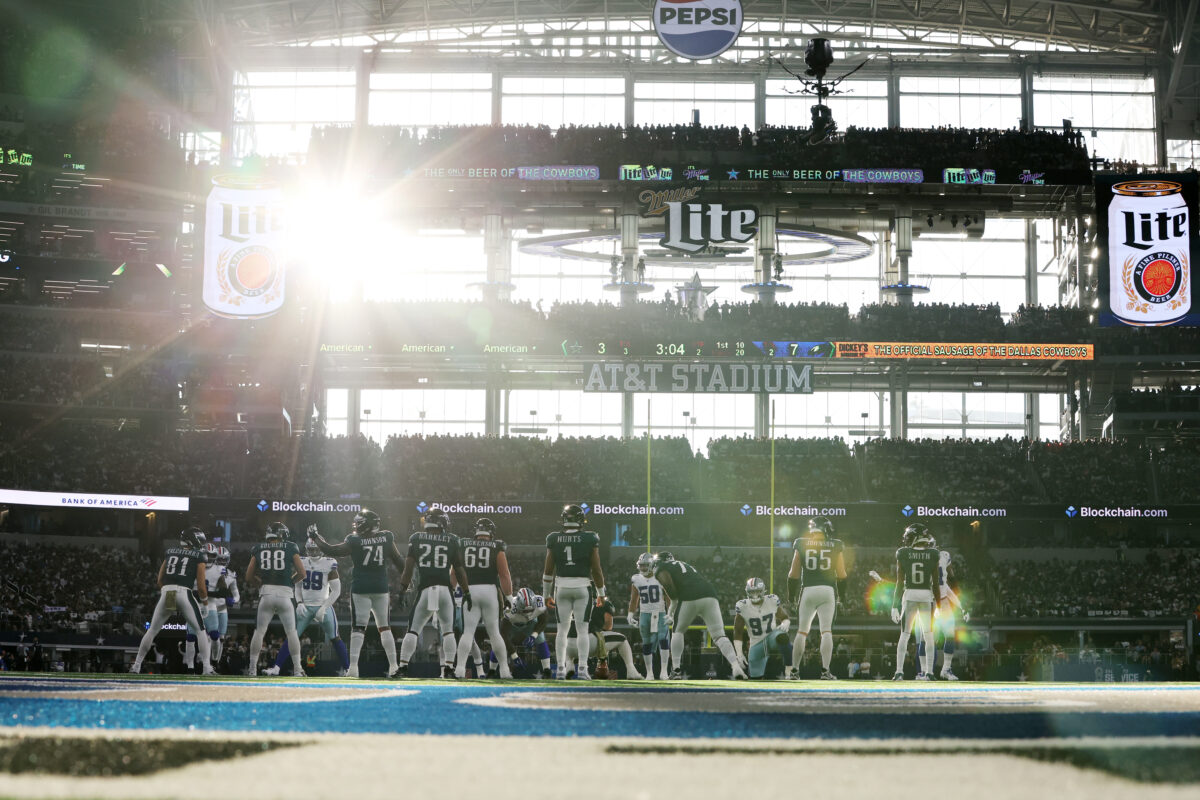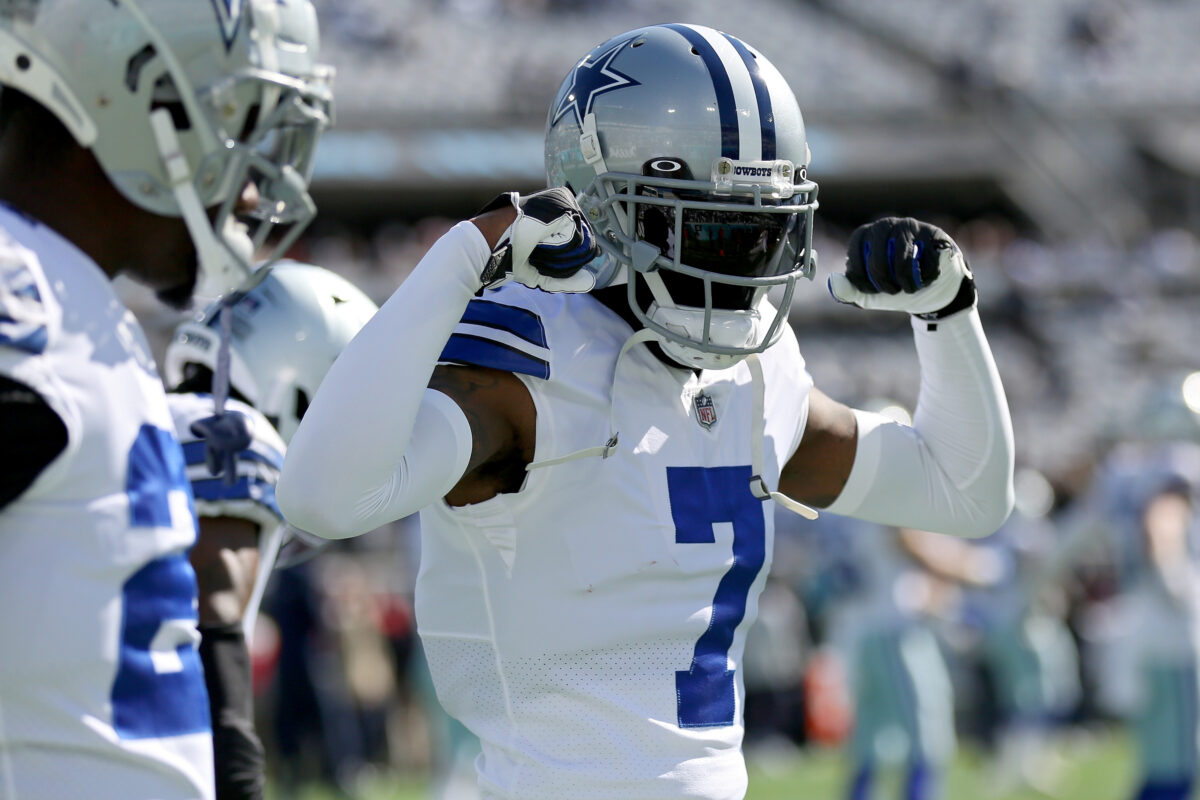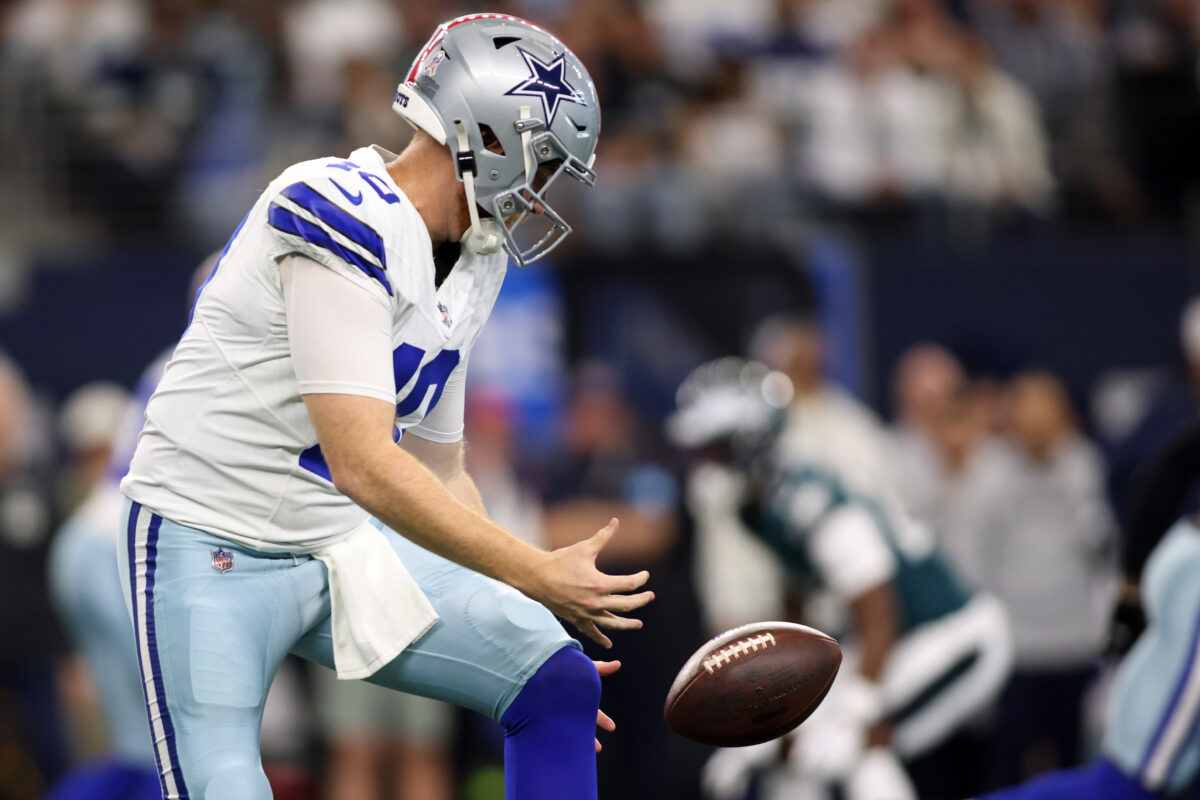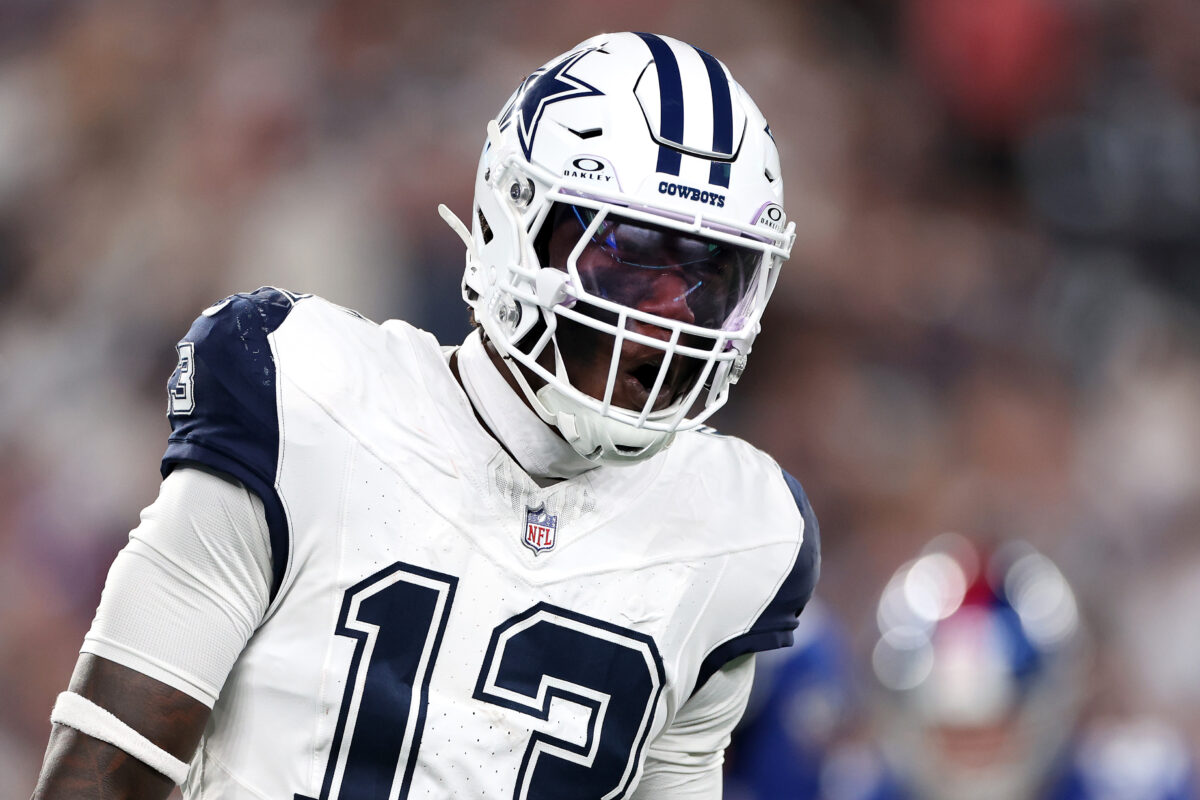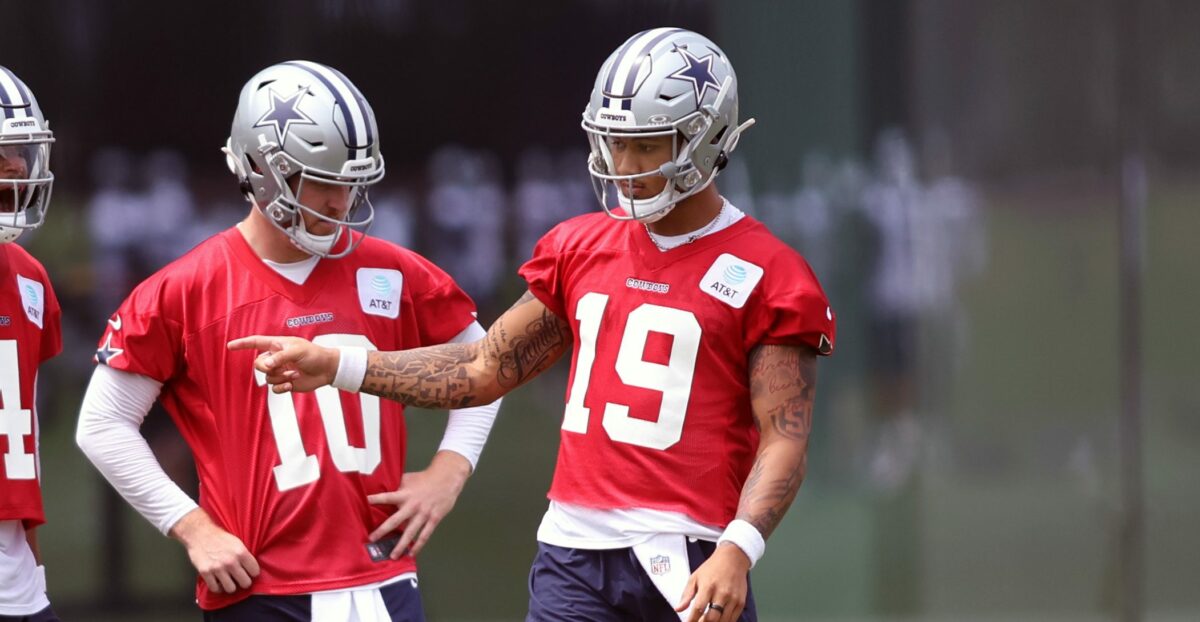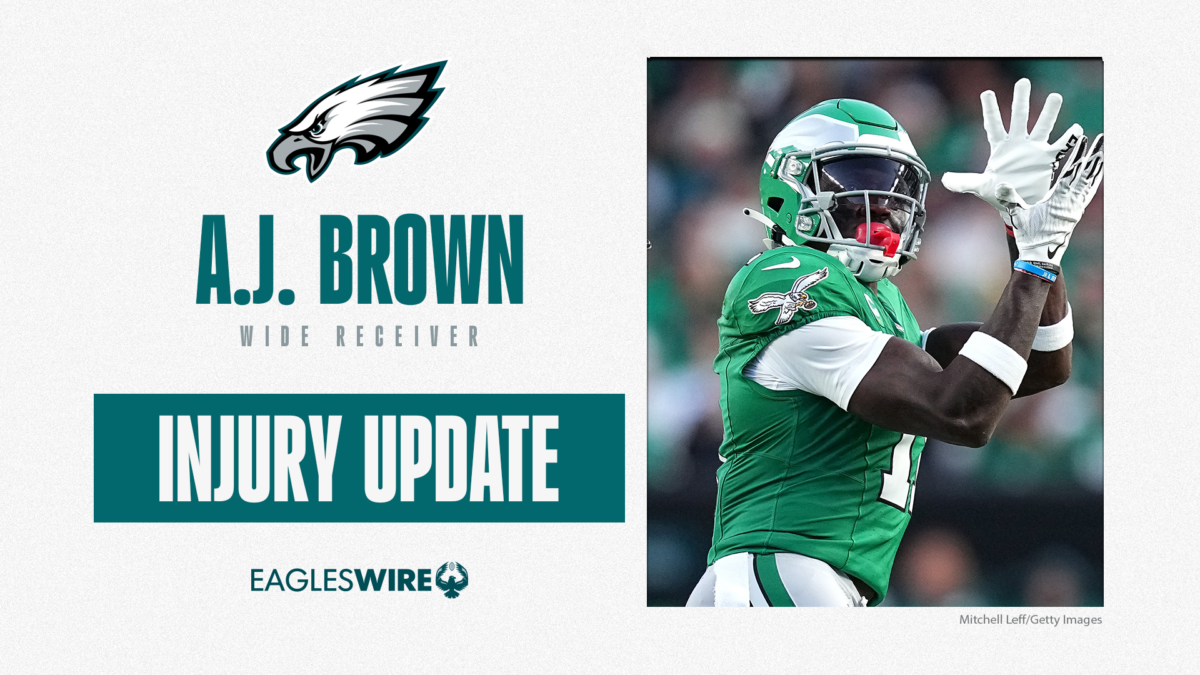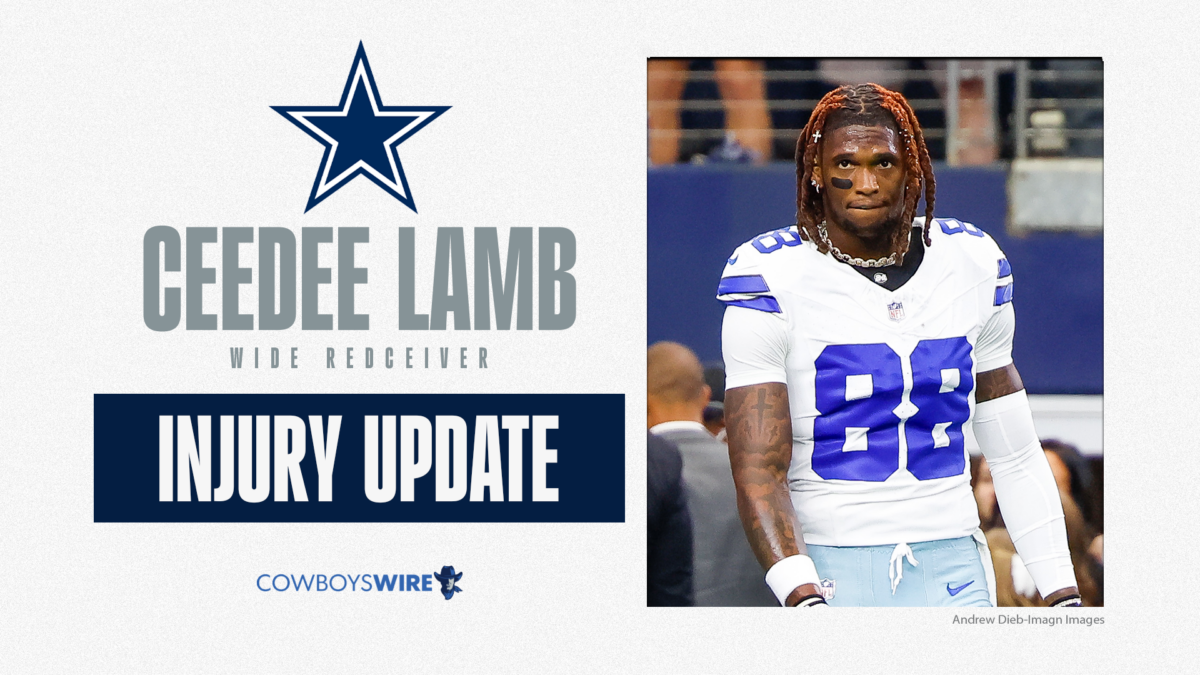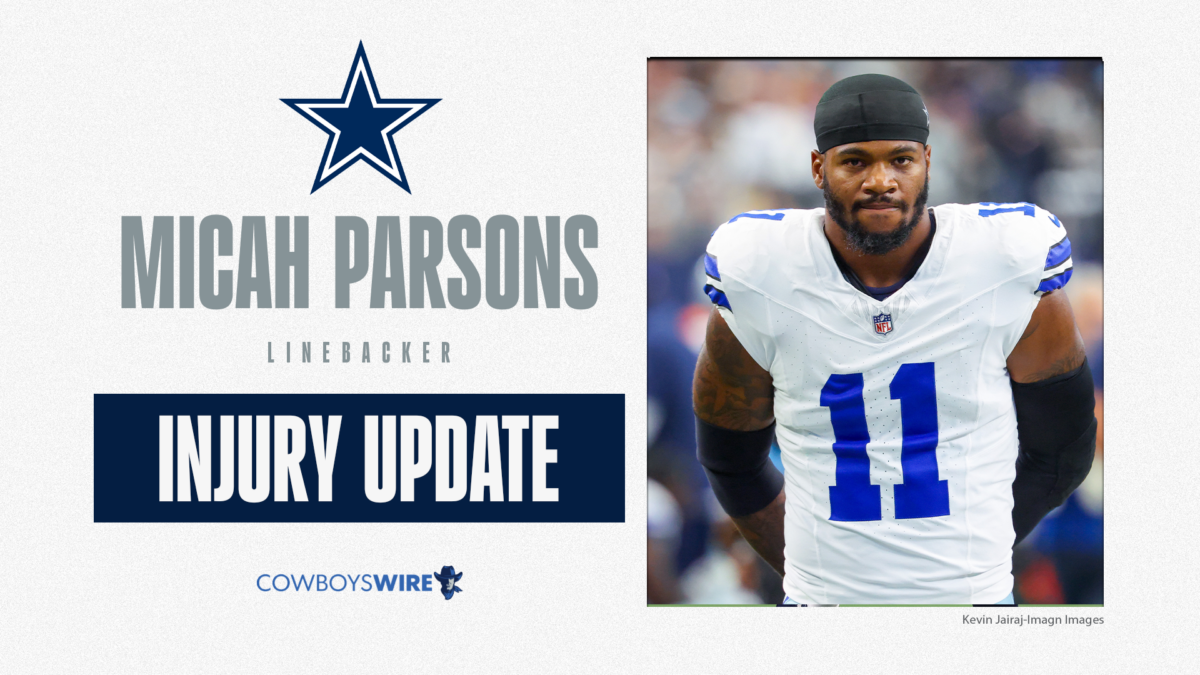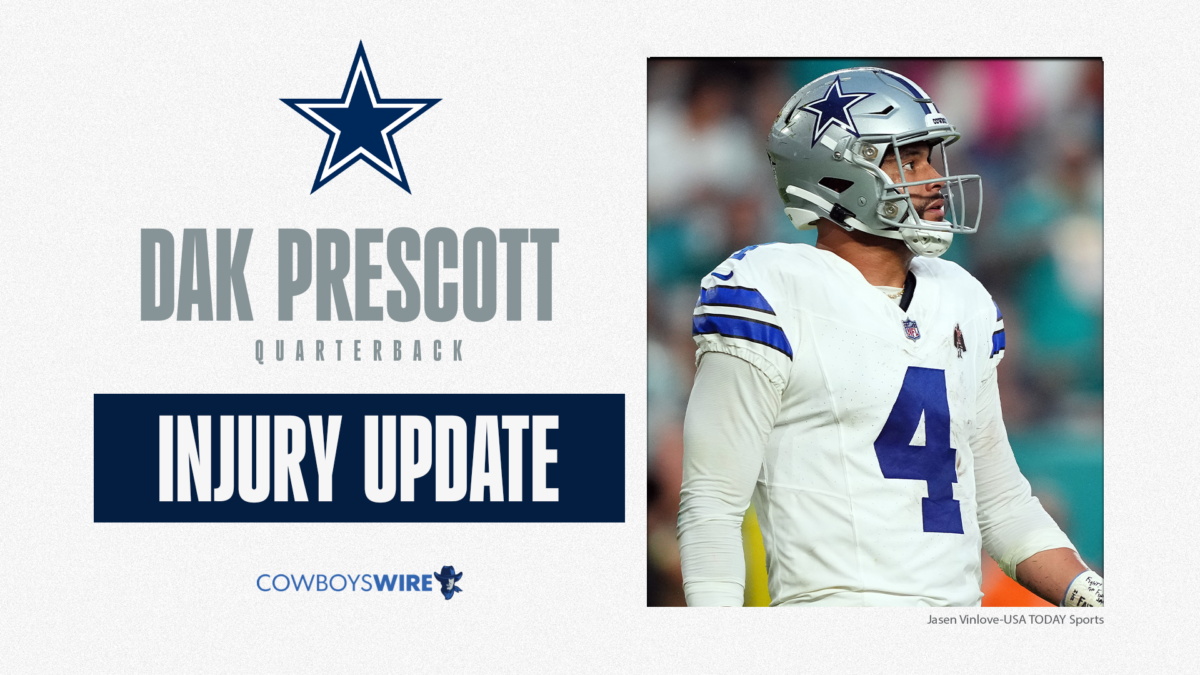This article first appeared during CowboysWire’s first year of existence: 2016. Yet here again, eight years later, it is still relevant because Jerry Jones would rather have iconic images circulating the web than to eliminate a problem that’s existed since AT&T Stadium was being built. Nothing here has aged poorly, so we revisit the conversation had then.
Looks like CeeDee said, “It was the sun.” Yeah, I’m sure it was. pic.twitter.com/EWYz4esQWv
— LP Cruz
(@SDQFlightCrew) November 10, 2024
CeeDee Lamb on the attempted TD pass from Cooper Rush that sailed past him in the end zone in a sun spot:
“I couldn’t see the ball. Couldn’t see the ball, at all. The sun.”
In favor of curtains?
“Yes. One thousand percent.”#Cowboys
— Patrik [No C] Walker (@VoiceOfTheStar) November 11, 2024
For a $1.2 billion stadium, one would think sun interference would be the last thing a home team need worry about. Maybe that’s part of the problem, it seems as if it was one of the last things the club worried about, according to one aerospace engineer.
Gregg Wilson, former officer in the Canadian Air Force and consultant to defense giants such as Lockheed Martin and Boeing, is a long-time Cowboys season ticket holder. In 2008, as the team was beginning to work on the new stadium, Wilson inquired as to possible sun interference when working with the sales department to determine where his seats would be.
My concerns about the new stadium’s sun problems arose from one of the biggest problems from the old [Texas] stadium… the infamous sun spot. You never wanted to be stuck sitting in it during the pre-season or the first month of the regular season . . . The hole in roof acted like a giant magnifying glass. Everyone in the sun for those early games were literally melting away.
I recall the sales staff reassuring everyone that the new stadium would never have this problem since it was temperature controlled that the roof wouldn’t be open with outside temperatures hotter than 80 degrees or colder than 60 degrees . . .
In my opinion, a magnified 80 degrees was still unacceptable considering the high cost associated with PSLs.
At the time, I was requesting a very specific PSL on the home side of the stadium and they said I would need to prove an inadequacy with one side of the stadium versus the other… before they would entertain my request.
And prove it, he did.

Wilson provided them a series of data charts in addition to the one above explaining troublesome dates and times when the sun could affect the viewing experience. Wilson states the overmatched Cowboys sales team replied “Is this a joke?”
If it was, Jason Witten and Dez Bryant certainly weren’t laughing in the Giants game.
Had I not done that analysis for those seats (for the top opening), I never would have guessed there was a potential problem with the side windows of the stadium (that’s the location on my graph that says “Impact unknown”). Remember, the old stadium never had side windows.
Wilson made the point if he was able to construct a feasible mapping of how the sun could potentially affect his viewing experience, it would stand to reason the club would have invested resources into preparing themselves for the possibility it could affect the game. There likely wouldn’t be any communication between a sales staff and those that deal with in-game strategy such as choosing which direction to pick prior to kickoff. However, in seven years of playing at the stadium, one would hope the Cowboys staff would be better prepared for such a scenario.
Wilson believes if nothing changes, the problem could reappear Sunday during the game against the Bengals and possibly even the Washington game in November. He even suggests Cowboys should worry more about which direction they play in than whether or not to get the ball first.
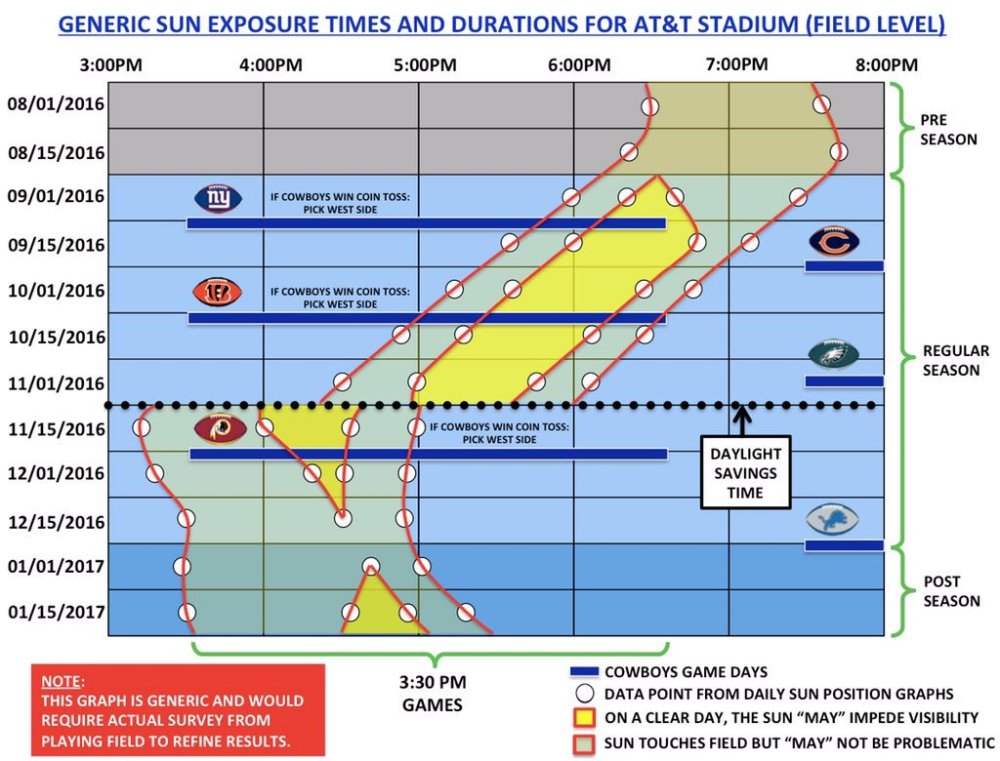
As it turns out, they did know, or at least the architects who designed the stadium did. Bryan Trubey, executive vice president of the architectural firm that built AT&T Stadium revealed the football park’s orientation is due to its position as the flagship of a bigger, unfinished sports complex is the reason for the sun issues.
“That stadium was developed as part of a master plan,” Trubey said. “That master plan will play out some day and the alignment between the stadium and the ballpark is one of the key elements to the entire master plan.
“When you get to the west side of the stadium, when we get the higher densities there, when you have 14-, 15-story buildings, which is not out of the realm of possibility, it’s a completely different situation,” Trubey said.
“We knew, quite frankly, we could handle the sun angles, which we knew from the very beginning, would be like that, exactly the way we handle it right now with the screens and the drapes,” Trubey said. – SportsDay
Wait, there are screens and drapes? Then how in the world could there have been impact on the game and more importantly, how was it allowed to continue?
Owner Jerry Jones calls the impact the sun has on a game, even Sunday’s loss, fractional.
Well, okay then. Hopefully, the decision makers will utilize the fail-safes to prevent this from happening again.
